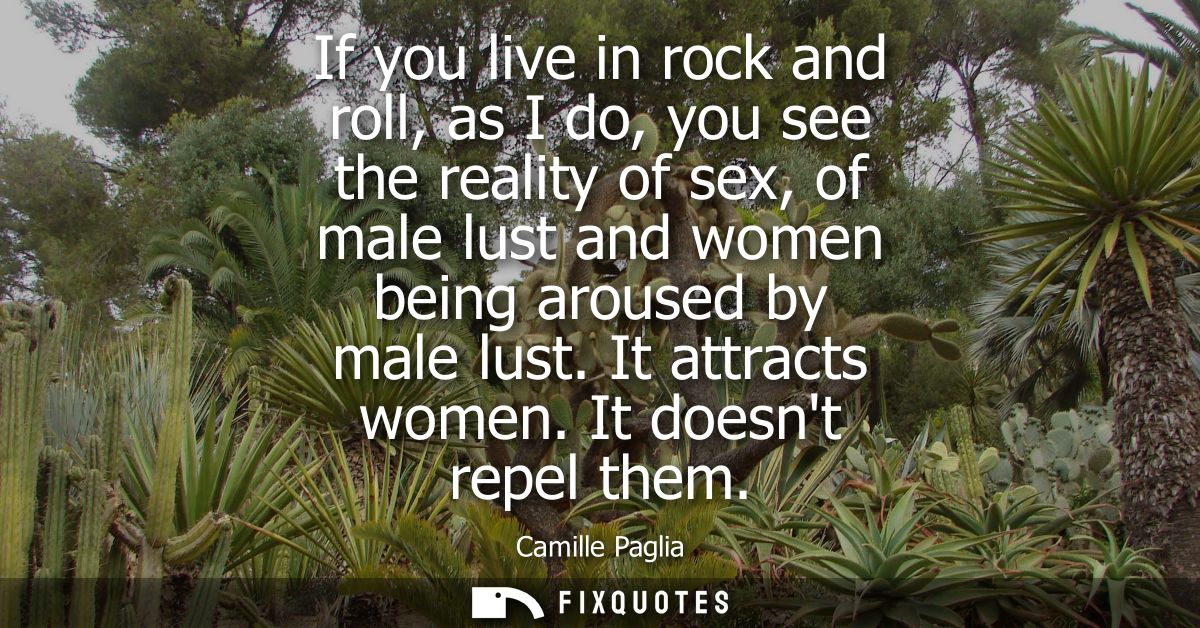"If you live in rock and roll, as I do, you see the reality of sex, of male lust and women being aroused by male lust. It attracts women. It doesn't repel them"
About this Quote
Paglia frames rock and roll as a theater where erotic energy is overt, stylized, and mutually legible. The stage amplifies male desire into a spectacle: swagger, volume, risk, and bravado become signals of vitality. She argues that these displays can be erotically compelling to many women, not because of crude aggression alone, but because confidence, charisma, and audacity carry an allure entwined with music’s pulse and the scene’s ritualized transgression.
Seen this way, “male lust” is not merely private appetite but a performed force, translated through rhythm, posture, costume, and myth. Audiences collaborate in the script. Women are not passive recipients; they interpret, flirt, choose, play with danger, and often control the terms of engagement. The club, the concert, the backstage corridor become spaces where desire is negotiated within understood cues and boundaries. The attraction is as much to energy and status as to sex: the artist seems to command the room, bend time, defy rules, qualities that read as erotic potency.
Her claim also provokes. It pushes against narratives that erotic display by men is inherently predatory or repulsive, insisting that cultural panic can ignore how many women are active co-authors of these scenes. Yet the assertion risks flattening difference. Women’s responses are heterogeneous; not all are aroused by the same codes, and contexts of power, safety, and consent matter. The music industry’s machinery can blur lines between persona and exploitation, turning “lust” into commodity and sometimes into coercion.
At its strongest, the observation identifies a paradox: transgression can feel safe when ritualized, and danger can be erotic when bounded by consent and performance. Rock and roll converts desire into choreography, where the heat of male exhibition meets the gaze and agency of women who choose to be there. The magnetism is real, but it is not universal, and it relies on shared scripts, mutual recognition, and the freedom to say yes, or no.
More details
About the Author

